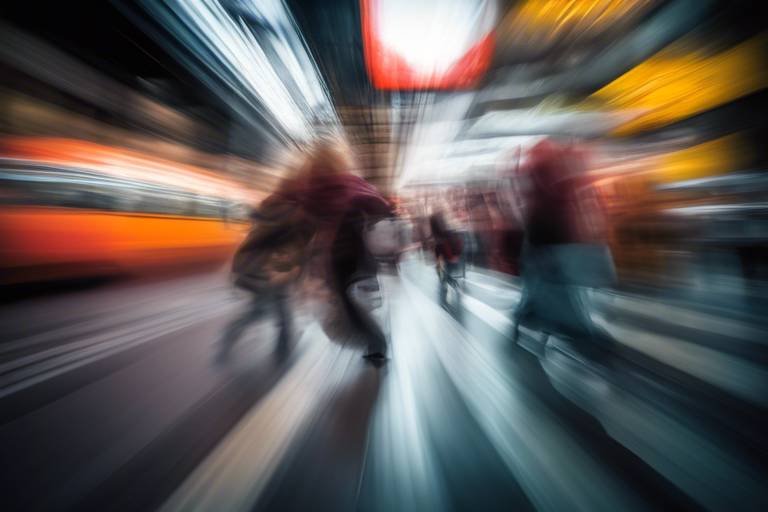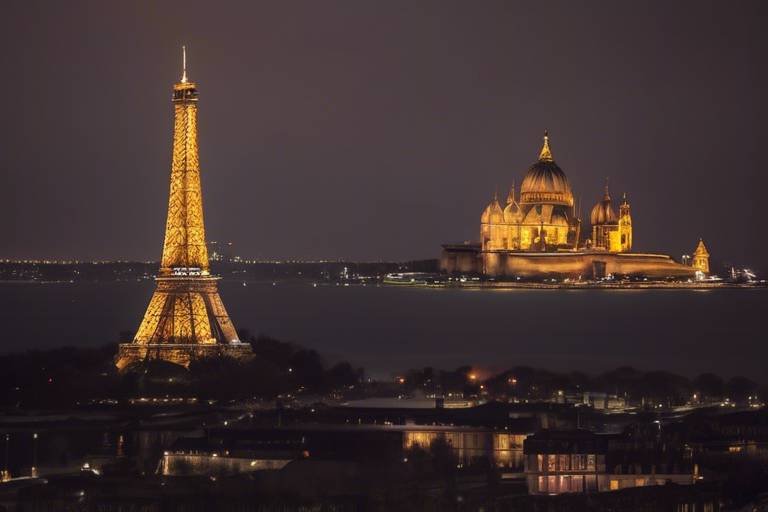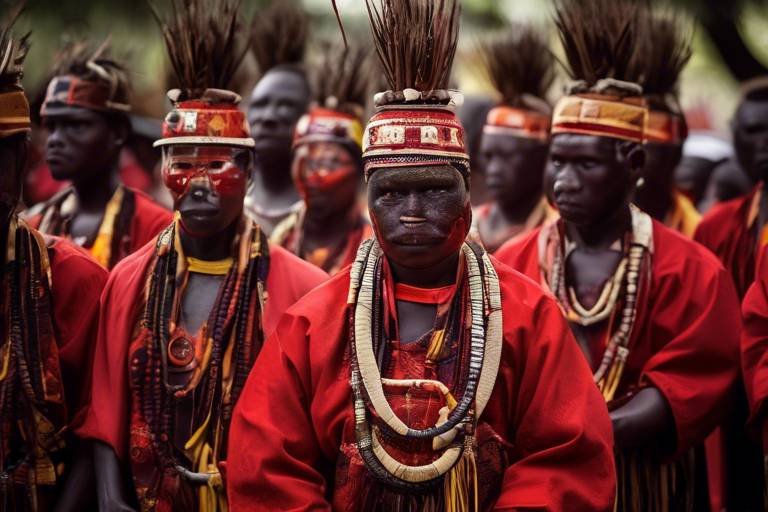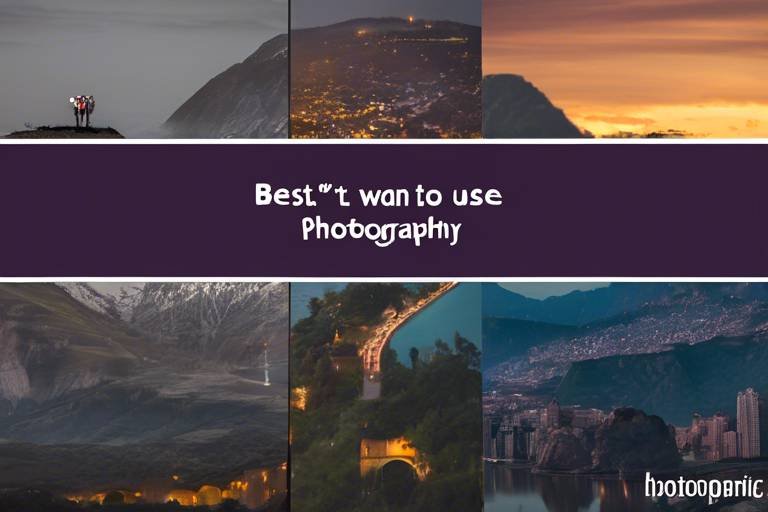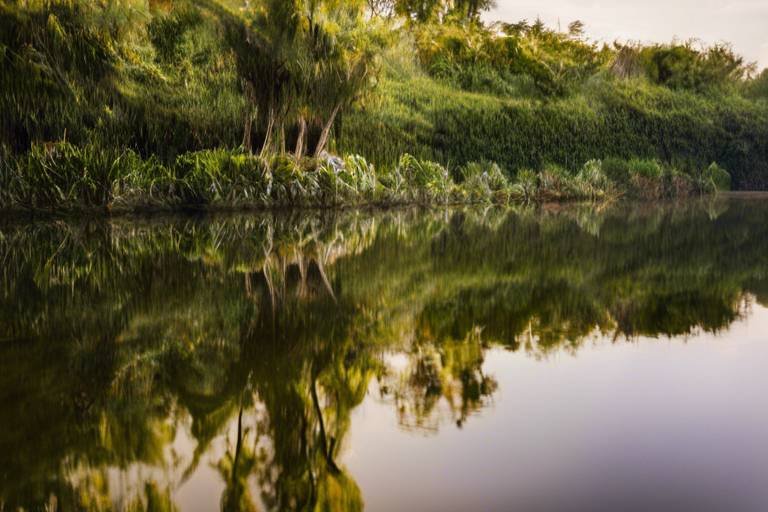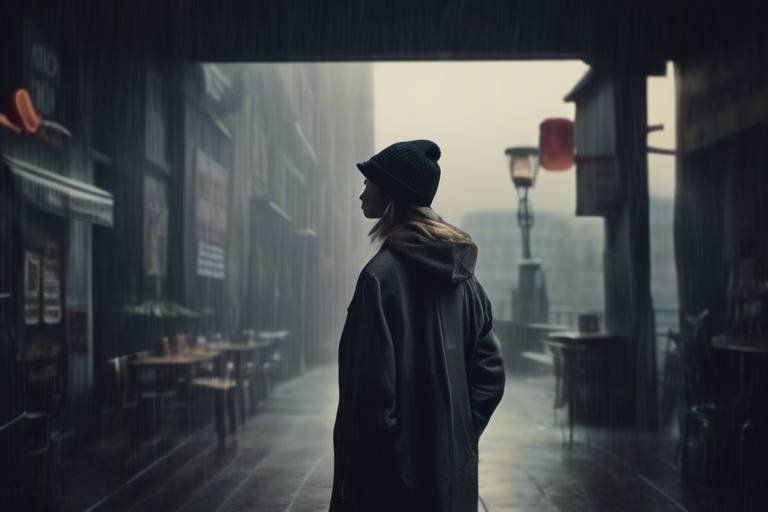Techniques for Capturing Motion in Travel Photography
Are you tired of static and lifeless travel photos? Do you want to inject a sense of dynamism and energy into your images? Well, you're in luck! In this article, we will delve into the fascinating world of capturing motion in travel photography. By mastering the art of motion blur and freezing techniques, you can elevate your travel photos to a whole new level of creativity and excitement.
Let's start by understanding the concept of motion blur. By using slow shutter speeds, you can convey a feeling of movement and fluidity in your travel images. Imagine capturing a bustling street market with blurred figures darting around, creating a sense of hustle and bustle that immerses the viewer in the scene. Motion blur adds a cinematic quality to your photos, turning static moments into dynamic narratives that leap off the screen.
On the flip side, freezing action with fast shutter speeds allows you to capture sharp details and decisive moments in your travel photography. Whether it's a dancer mid-leap or a bird in flight, mastering fast shutter speeds enables you to freeze motion in time, preserving fleeting moments with precision and clarity.
When it comes to selecting the right shutter speed, it's crucial to match the speed of your subject's movement with the appropriate setting. A fast-moving car may require a higher shutter speed to maintain sharpness, while a flowing river might benefit from a slower speed to enhance the sense of motion. The key is to experiment and find the perfect balance that conveys the desired effect in your travel shots.
Another technique to explore is panning, where you track a moving subject horizontally with a slower shutter speed. This creates a striking contrast between a sharp subject against a blurred background, adding a dynamic and kinetic feel to your travel photos. It's like capturing a moment of stillness amidst a whirlwind of activity, drawing the viewer's eye to the focal point of your image.
To ensure stability and avoid unwanted blurriness when capturing motion, using tripods and image stabilization is essential. These tools help maintain the sharpness of your images, allowing you to focus on the creative aspects of motion photography without worrying about technical distractions.
Now, let's talk about incorporating motion in landscapes. By integrating elements of movement such as flowing water or swaying trees, you can enhance the visual impact of your landscape shots in travel photography. Imagine a waterfall cascading down a rocky cliff, its silky streams creating a sense of tranquility and motion that transports the viewer to the scene.
For a more ethereal effect in landscapes, consider experimenting with long exposure photography. By using extended shutter speeds, you can capture the passage of time and create mesmerizing effects like smooth waterfalls or streaking clouds. Long exposure adds a unique dimension to your travel images, transforming ordinary landscapes into dreamlike vistas that captivate the imagination.

Understanding Motion Blur
Motion blur is a fascinating technique in photography that can add a sense of dynamism and movement to your travel images. By using slow shutter speeds, photographers can convey the feeling of motion in a still photograph, creating a visually engaging narrative that captures the essence of a moment in time. This technique is particularly effective in travel photography, where it can enhance the energy and excitement of a scene, whether it's a bustling city street or a flowing waterfall in a tranquil landscape.
When you introduce motion blur into your travel photographs, you invite the viewer to experience the scene in a different way, almost as if they are witnessing the passage of time right before their eyes. The blurred elements in the image can evoke a sense of speed, fluidity, and liveliness, transforming a static picture into a dynamic visual story that sparks the imagination.
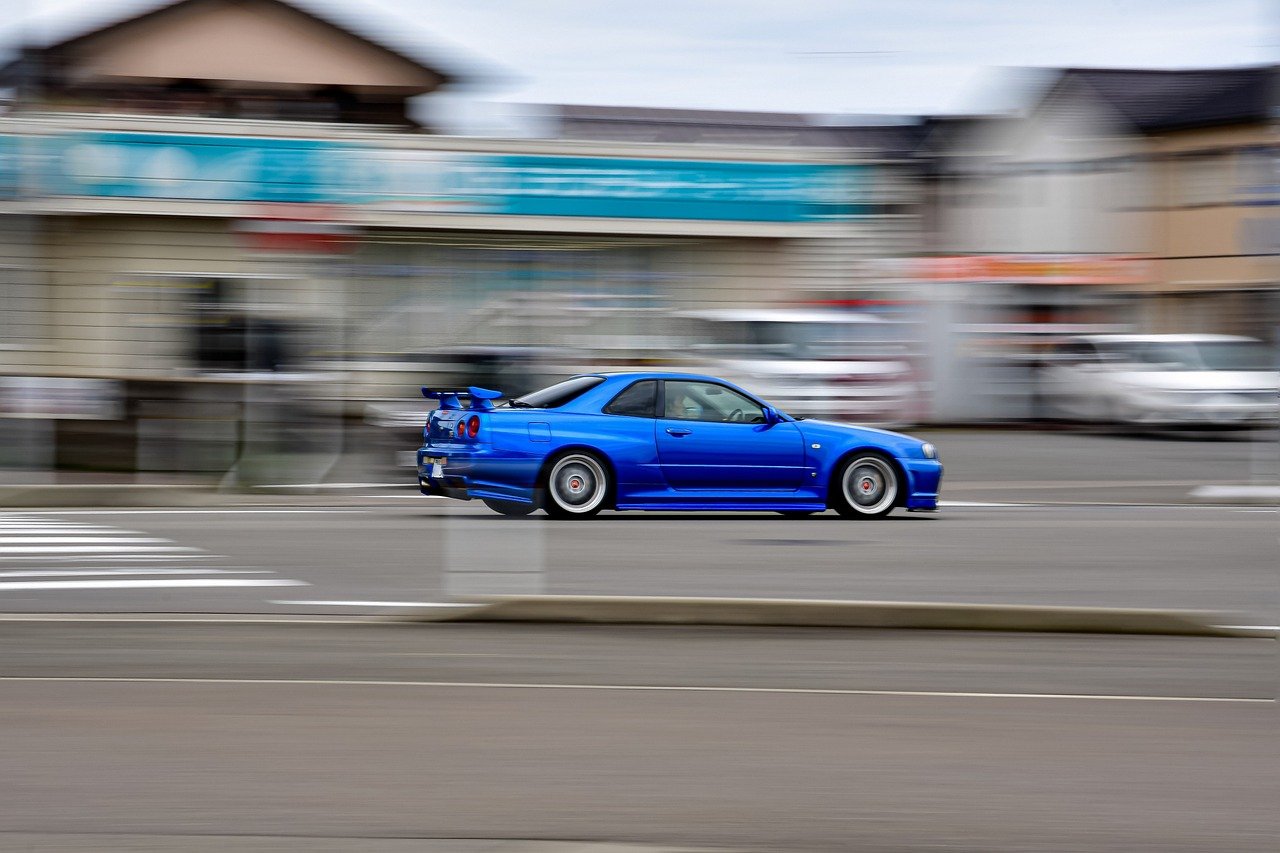
Freezing Action
When it comes to capturing motion in travel photography, mastering the art of freezing action is essential. By utilizing fast shutter speeds, photographers can seize precise moments in time, preserving details with impeccable clarity. This technique allows for the creation of dynamic and impactful images that convey a sense of energy and vitality.
One of the key aspects of freezing action is understanding the relationship between shutter speed and motion. Selecting the right shutter speed is crucial in determining how motion is captured in a photograph. By adjusting the settings based on the speed of the subject's movement, photographers can achieve the desired effect, whether it's freezing a fast-moving object or showcasing subtle movements.
Furthermore, the panning technique is a valuable method for capturing motion while maintaining a sharp subject. By tracking a moving subject horizontally with a slower shutter speed, photographers can create a striking contrast between the focused subject and the blurred background. This technique adds a sense of dynamism and movement to travel photos, immersing viewers in the scene.
When it comes to ensuring image sharpness in motion-filled shots, the use of tripods and image stabilization is crucial. These tools help maintain camera stability, preventing unwanted blurriness that can detract from the overall quality of the image. By investing in reliable equipment and mastering proper stabilization techniques, photographers can elevate their motion capture skills to new heights.

Selecting the Right Shutter Speed
When it comes to capturing motion in travel photography, selecting the right shutter speed is crucial in achieving the desired effect. The shutter speed determines how long the camera's sensor is exposed to light, affecting how motion is depicted in the final image. But how do you determine the ideal shutter speed for different scenarios?
For fast-moving subjects, such as a speeding car or a running animal, a faster shutter speed is necessary to freeze the action and capture sharp details. On the other hand, when aiming to convey a sense of motion, a slower shutter speed can be employed to introduce blur and create a dynamic feel in the photograph. So, how do you strike the right balance?
One approach is to start by considering the speed of the subject you are photographing. A general rule of thumb is to use a shutter speed that is at least equal to the focal length of your lens to prevent camera shake and ensure sharpness. For instance, if you are using a 50mm lens, a shutter speed of 1/50 seconds or faster would be advisable. But what if you want to experiment with different effects?
In situations where you want to convey a sense of motion while still maintaining some sharpness in the subject, you can opt for a moderate shutter speed that allows for a controlled amount of blur. This technique can add a dynamic element to your travel photos, making them more visually engaging and telling a story through movement. How can you practice and improve your skills in selecting the right shutter speed?
Experimenting with different shutter speeds in various settings and lighting conditions is key to honing your skills in capturing motion effectively. By understanding the relationship between shutter speed, aperture, and ISO, you can manipulate these settings to achieve the desired outcome in your travel photography. Remember, practice makes perfect!

Panning Technique
The is a valuable skill in travel photography that can elevate your images to new heights. This method involves tracking a moving subject horizontally with a slower shutter speed, allowing you to capture a sharp subject against a blurred background. Imagine a speeding train captured in perfect focus while the world around it blurs into a mesmerizing streak of colors, creating a sense of speed and dynamism in your travel photos.

Using Tripods and Image Stabilization
When it comes to capturing motion in travel photography, using tripods and image stabilization is crucial for ensuring sharp and clear images. These tools help maintain stability and prevent unwanted blurriness, especially when shooting with slow shutter speeds or in low light conditions. Tripods provide a sturdy base for your camera, allowing you to keep it steady during longer exposures or while panning to track moving subjects. Image stabilization technology, whether built into the camera or the lens, helps reduce the effects of camera shake, resulting in sharper photos.
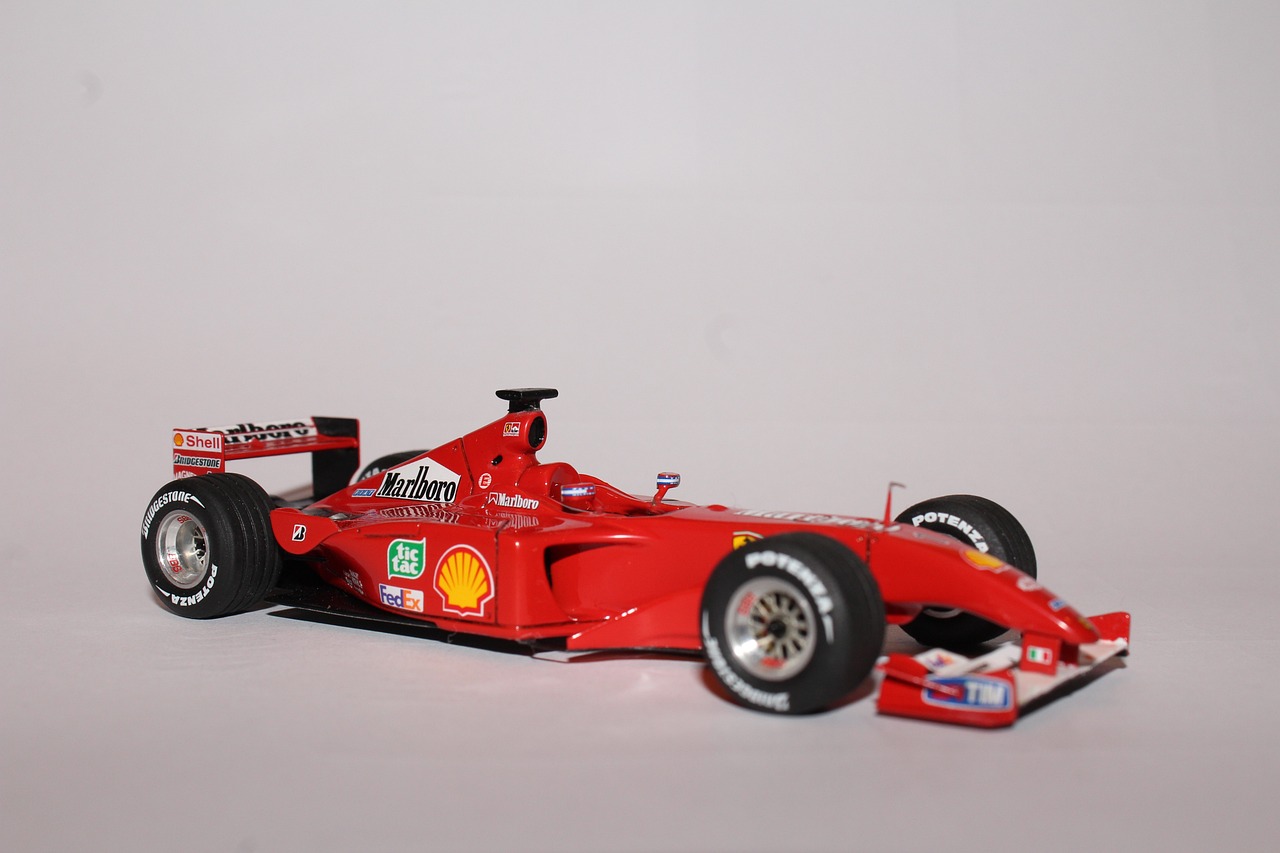
Incorporating Motion in Landscapes
When it comes to travel photography, incorporating motion in landscapes can significantly enhance the visual impact of your shots. By introducing elements of movement, such as flowing water or swaying trees, you can create dynamic and engaging images that transport viewers to the scene.
One effective technique for capturing motion in landscapes is through long exposure photography. By using long exposure techniques, you can extend the duration of the shot, allowing for the passage of time to be captured in a single image. This approach can create ethereal effects, such as smooth, silky waterfalls or streaking clouds, adding a unique and mesmerizing dimension to your landscape photographs.
Another way to incorporate motion in landscapes is by experimenting with different shutter speeds. By adjusting your shutter speed settings, you can convey movement in elements like waves crashing on the shore or leaves rustling in the wind. Slow shutter speeds can blur the motion, creating a sense of dynamism and energy in your landscape compositions.
Furthermore, consider the composition of your landscape shots to emphasize motion. Framing a static subject against a backdrop of moving elements can create a striking contrast that draws the viewer's eye. For example, capturing a stationary tree amidst a field of swaying grass can evoke a sense of stillness within a dynamic environment.
Remember, incorporating motion in landscapes is not just about technical settings; it's about storytelling. Use motion to convey emotion, to evoke a sense of wonder or excitement in your viewers. Experiment with different techniques and push the boundaries of traditional landscape photography to create compelling and memorable images that truly capture the essence of your travel experiences.
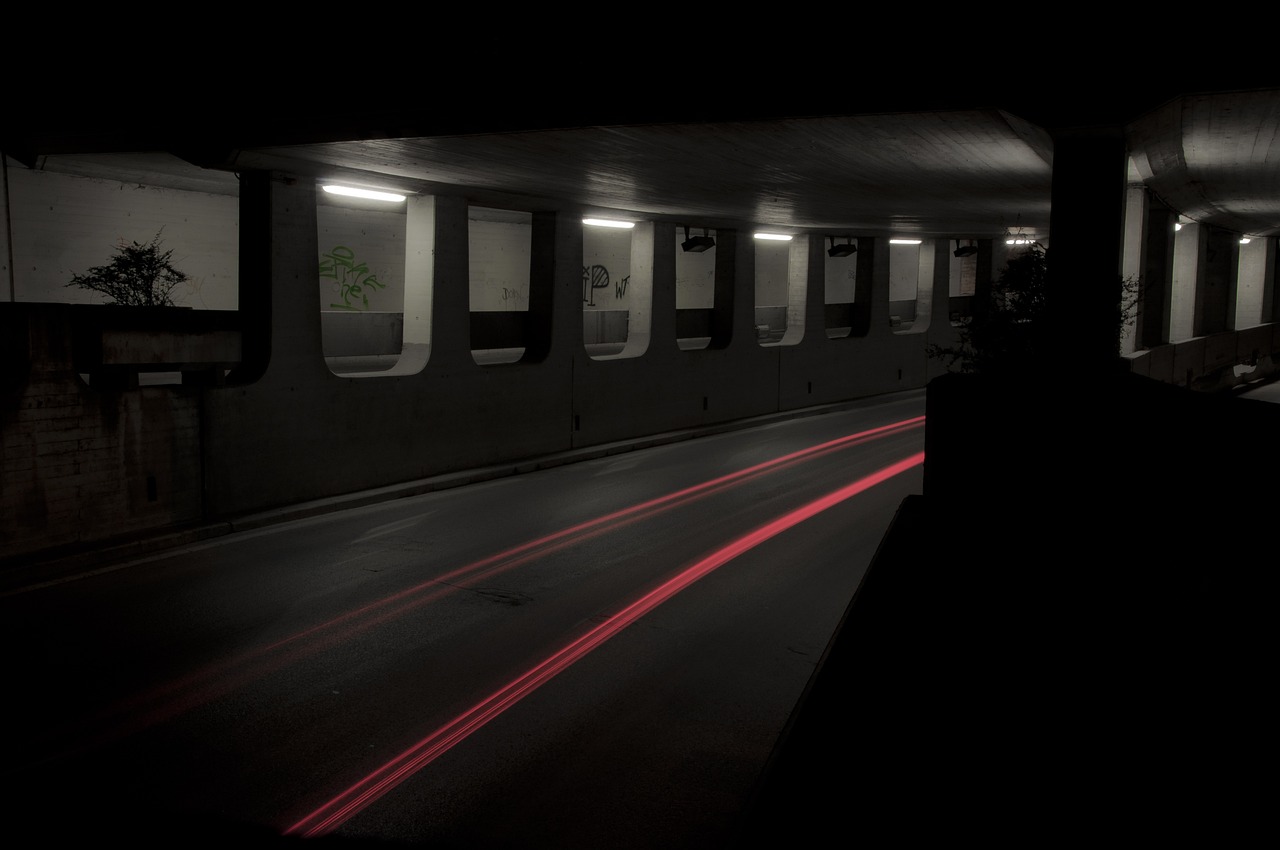
Long Exposure Photography
Long exposure photography is a fascinating technique that allows photographers to capture the passage of time in a single frame. By using slow shutter speeds, this method creates stunning visual effects, such as smooth, flowing water or streaks of light in night scenes. In travel photography, long exposure can add a sense of tranquility or drama to landscapes, transforming ordinary scenes into extraordinary works of art.
One of the key aspects of long exposure photography is the need for stability. Since the shutter remains open for an extended period, any camera movement can result in unwanted blurriness. To counter this, photographers often use tripods to keep the camera steady during the exposure. Additionally, remote shutter releases or self-timers can be employed to minimize camera shake and ensure sharp, crisp images.
When incorporating long exposure in travel photography, it's essential to consider the lighting conditions. Low light situations, such as dusk or dawn, are ideal for capturing the ethereal effects of long exposure. Experimenting with different exposure times can yield varying results, from subtle blurs to more pronounced streaks of light or movement.
Furthermore, long exposure photography opens up a realm of creative possibilities. By adjusting the exposure settings and experimenting with different subjects and compositions, photographers can create truly unique and captivating images that convey a sense of timelessness and motion in a single frame.
Frequently Asked Questions
- What is motion blur in photography?
Motion blur in photography refers to the effect of capturing a moving subject with a slow shutter speed, resulting in a sense of movement and fluidity in the image. It adds a dynamic and artistic touch to travel photographs, enhancing the visual storytelling aspect.
- How can I freeze action in travel photography?
To freeze action in travel photography, you need to use fast shutter speeds to capture sharp details and moments in time with precision. By selecting a high shutter speed, you can effectively stop motion and ensure clarity in your images, especially when capturing fast-moving subjects.
- What is the panning technique in photography?
The panning technique involves tracking a moving subject horizontally with a slower shutter speed. This technique allows you to keep the subject sharp while blurring the background, creating a sense of speed and motion in the image. It is commonly used in travel photography to convey a dynamic feel.
- Why is camera stability important in capturing motion?
Camera stability is crucial when capturing motion in travel photography to avoid unwanted blurriness and maintain image sharpness. The use of tripods and image stabilization techniques can help ensure that your photos remain clear and free from camera shake, especially when shooting with slower shutter speeds.
- How can long exposure photography enhance landscape shots?
Long exposure photography can enhance landscape shots by capturing the passage of time and creating ethereal effects in the image. By using long exposure techniques, such as capturing flowing water or moving clouds, you can add a unique dimension to your travel photos, making them visually compelling and atmospheric.

